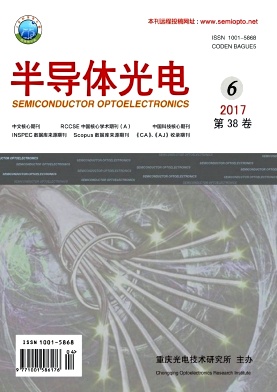半导体光电, 2017, 38 (6): 849, 网络出版: 2017-12-25
可见光通信中自适应空间调制研究
Research on Adaptive Spatial Modulation in Visible Light Communication
可见光通信 空间调制 最大似然算法 Fischer算法 visible light communication spatial modulation the maximum likelihood algorithm Fischer algorithm
摘要
针对可见光通信中MIMO系统的信道干扰问题, 采用自适应空间调制技术, 即发送端任一时刻只有一个发光LED处于工作状态来传输数据, 接收端采用最大似然算法恢复原始信号, 同时为优化误码率性能, 加入自适应Fischer算法, 发送端能够根据信道状态信息对各个子载波分配不同的比特, 降低误码率。实验结果表明: 在传输速率和发送功率一定的情况下, 结合Fischer算法的空间调制技术能有效降低系统误码率, 改善可见光通信系统的通信性能。
Abstract
For the channel interference of MIMO system in visible light communication, an adaptive spatial modulation technique is used, in which only one LED is in the working state at any time. The receiver uses the maximum likelihood algorithm to restore the original signal. At the same time, the adaptive Fischer algorithm is added to optimize the bit error rate performance. The transmitter can allocate different bits to each subcarrier according to the channel state information to reduce the bit error rate. The experimental results show that the spatial modulation technique combined with Fischer algorithm can effectively reduce the bit error rate performance and improve the communication performance of the visible light communication system under the condition of constant transmissionrate and transmission power.
黄如意, 郭心悦, 徐伯庆. 可见光通信中自适应空间调制研究[J]. 半导体光电, 2017, 38(6): 849. HUANG Ruyi, GUO Xinyue, XU Boqing. Research on Adaptive Spatial Modulation in Visible Light Communication[J]. Semiconductor Optoelectronics, 2017, 38(6): 849.



